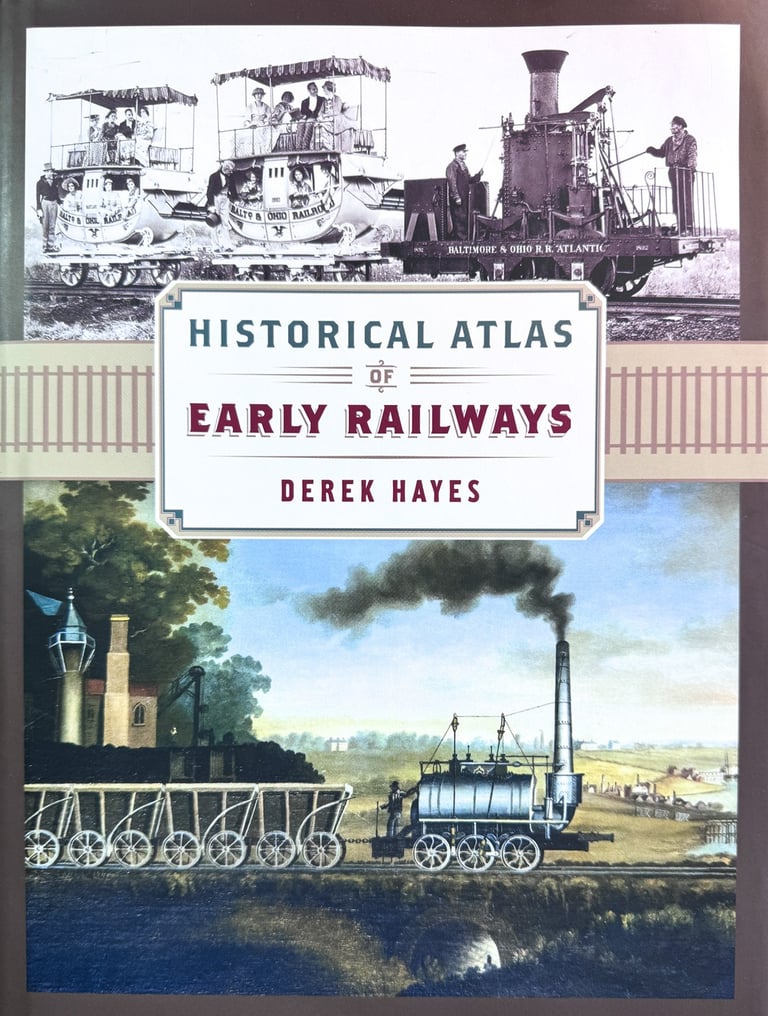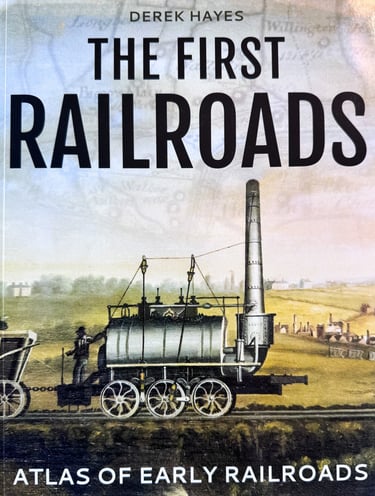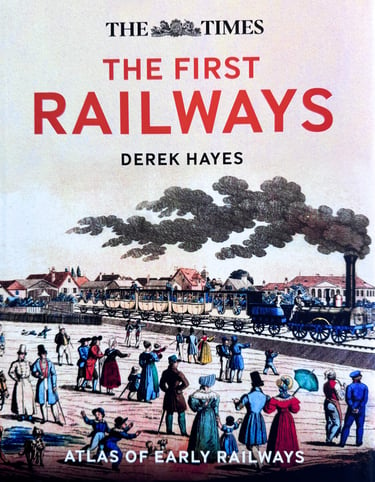Historical Atlas of Early Railways
Published in the UK as The First Railways
The coming of the railway changed the world. Yet railways did not begin with the opening of the Liverpool & Manchester Railway in 1830, as so many texts proclaim, but much earlier. Wagons were being put on rails as early as the fifteenth century, and in the fifty years prior to 1830 there were hundreds of railways created, with wooden rails, with iron-topped wooden rails, with cast iron, and wrought iron, each improving on the strength and durability of the previous and, importantly, creating a set of available trackwork that could be used by a new invention—the steam locomotive.
Richard Trevithick produced the first and was able to test it on existing iron rails and all the first locomotives had rails on which to run. And the first locomotives were a medley bunch, propelled through racks and rods and chains, even one with legs and one known as an elephant; this even before a young George Stephenson began experimenting with steam locomotion and eventually built the first all-mechanical railway—in 1822, making him the clear choice as the engineer for the Stockton & Darlington Railway which opened in 1825 with a train pulled by his latest steam engine—Locomotion. Yet all through this period it was not clear that such relatively inefficient steam locomotives would be the way forward, and other means of traction were often used, especially stationary steam engines pulling wagons on ropes or chains.
This book covers the emergence of the modern railway in a unique, essentially geographical way, providing contemporary maps, many never before published, showing the locations and routes of the early railways. The book is profusely illustrated, for in addition to the maps it has photos of most of the surviving first locomotives and of replicas too, where they exist. There are nearly 300 maps and 400 photos and other illustrations.
Much of the early railway system originated in Britain, and so necessarily this is where most of the book is focused, but the earliest railways in France, Germany, and the rest of continental Europe are also considered, as are railways in North America. Several sections cover the emergence of the first steam locomotives, in particular those of Trevithick, Blenkinsop, Chapman, and Stephenson, and the historically important Stockton & Darlington and Liverpool & Manchester railways in detail.
In the Canadian edition there is an additional section covering early types of non-conventional railway—atmospheric railways (a technically sound system that failed because of the unavailability of suitable materials) — plus electric railways, underground railways, monorails, and mountain (rack) railways, all of which have fascinating histories.
Published 2017






